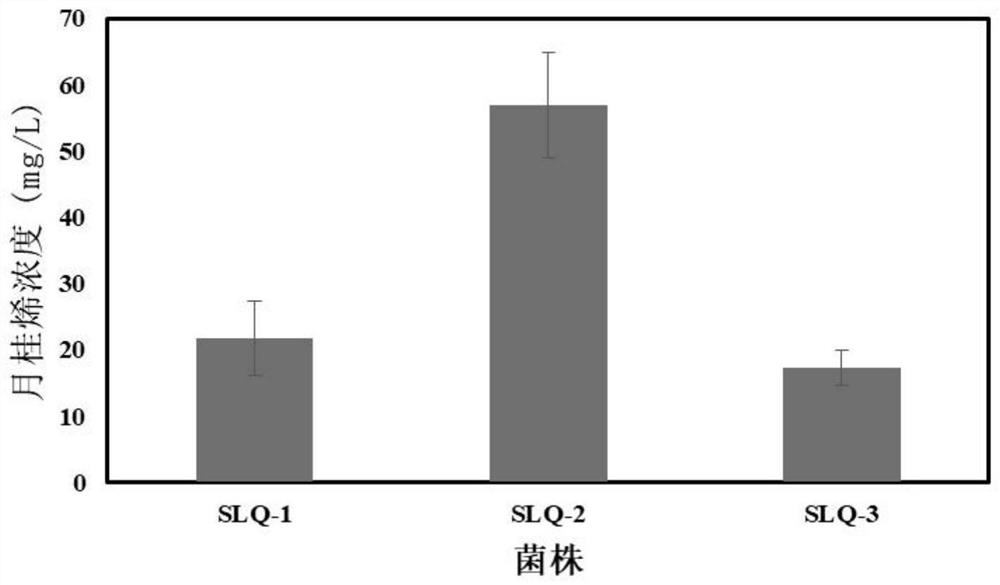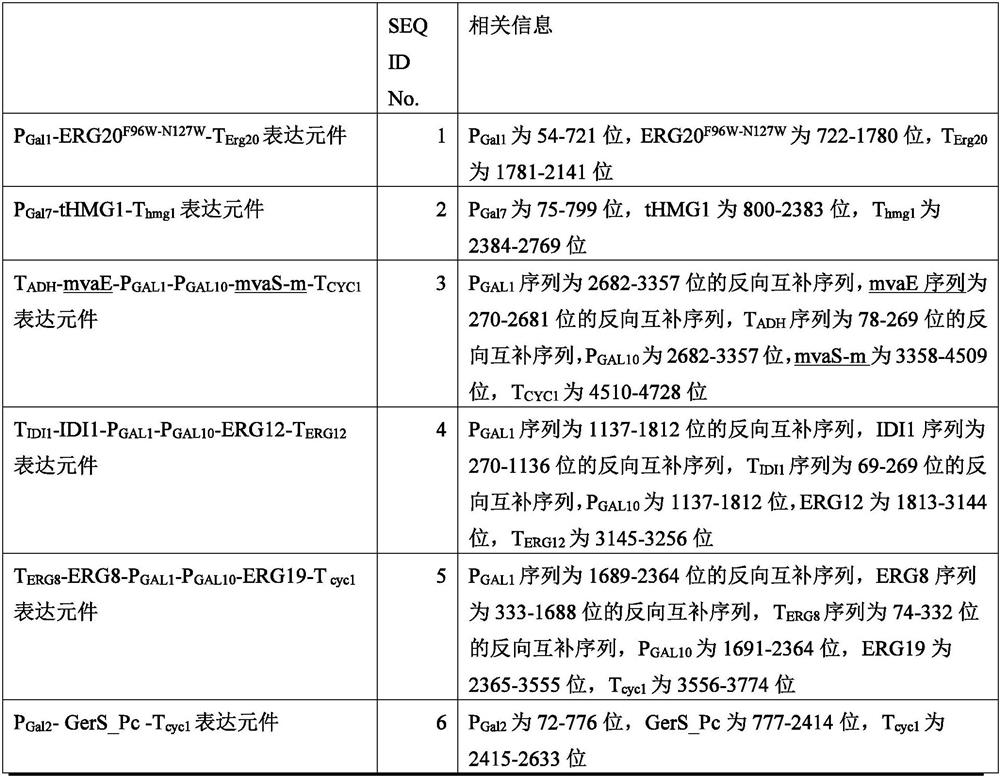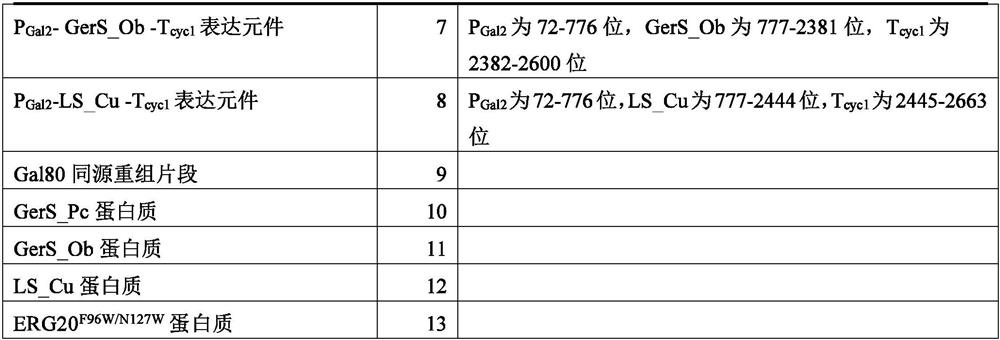Recombinant saccharomyces cerevisiae as well as construction method and application thereof
A technology for recombining Saccharomyces cerevisiae and constructing methods, applied in the fields of application, recombinant DNA technology, botanical equipment and methods, etc., can solve problems such as complex waste components, dependence on raw material availability, and environmental pollution
- Summary
- Abstract
- Description
- Claims
- Application Information
AI Technical Summary
Problems solved by technology
Method used
Image
Examples
Embodiment 1
[0049] Embodiment 1, the preparation of target gene
[0050] 1. Acquisition of genes related to MVA pathway modification
[0051] ERG20 F96W-N127W -T ERG20 , tHMG-T hmgl , IDI1-T IDI1 、ERG8-T ERG8 、ERG12-T ERG12 , ERG19-T ERG19 Acquisition of genes and Gal1, Gal2, Gal7, Gal10 promoters, ADH, CYC1 terminators, Gal80 upstream fragments and Gal80 downstream fragments.
[0052] Extract yeast genomic DNA as a template, use the primers required for gene amplification in Table 1 to amplify, and obtain fragments that meet the expected size
[0053] Use PrimSTAR HS DNA polymerase to configure the amplification system (TAKARA company), the amplification system is: 5×PS Buffer 10 μL, Dntp Mix 4 μL, each primer 1 μL, genomic DNA template 1 μL, HS polymerase (2.5U / >L) 0.5 μL , add distilled water to a total volume of 50 μL. The amplification conditions are: pre-denaturation at 98°C for 3 minutes (1 cycle); denaturation at 98°C for 10 seconds, annealing at 55°C for 5 seconds, exten...
Embodiment 2
[0083] Embodiment 2, the construction of recombinant bacteria
[0084] 1. Preparation of Competent Yeast
[0085] Cultivate the single colony of the starting bacteria in YPD medium at 30°C and 250rpm overnight, count the cell density of the overnight culture, and take the final OD 600nm Inoculate 20ml of YPD medium at a cell turbidity of 0.1. 30°C, 250rpm culture to OD 600nm 0.8. Cells were collected by centrifugation at 2500 rpm for 5 minutes using a sterile centrifuge tube. Discard the culture medium, suspend the cells in sterile water, and centrifuge as above. Discard the water, suspend the cells in 1mL of 100mM lithium acetate, and transfer the suspension to a sterile centrifuge tube; sediment the cells at high speed and short time to remove lithium acetate; suspend the cells in 100mM lithium acetate in a 4-fold system and aliquot to obtain competent cells .
[0086] The construction principle of the following recombinant bacteria is that the expression element that ...
Embodiment 3
[0115] Embodiment 3, the application of recombinant bacteria in the production of myrcene
[0116] 1. Engineering bacteria culture and product extraction
[0117] Activate the yeast engineering strains SLQ-1, SLQ-2 and SLQ-3 prepared in Example 2 respectively in Delft liquid medium, prepare seed liquid (30°C, 250rpm, 16h) in Delft liquid medium, with 1% The inoculum is inoculated in a 100mL Erlenmeyer flask containing 20mL Delft liquid medium and 2ml containing sec-butylphenyl-n-dodecane, cultured at 30°C, 250rpm for 2-3 days, and finally, transfer the liquid in the Erlenmeyer flask to a 50ml centrifuge tube, 5000rpm Centrifuge for 5 min, and collect the organic phase for later use.
[0118] 2. Qualitative and quantitative analysis of myrcene produced by bacteria
[0119] The organic phase material collected in step 1 was diluted 50 times with n-hexane, and detected by GC-MS. GC-MS determination conditions: inlet temperature 260°C, injection volume 1μL, splitless, solvent d...
PUM
 Login to View More
Login to View More Abstract
Description
Claims
Application Information
 Login to View More
Login to View More - R&D
- Intellectual Property
- Life Sciences
- Materials
- Tech Scout
- Unparalleled Data Quality
- Higher Quality Content
- 60% Fewer Hallucinations
Browse by: Latest US Patents, China's latest patents, Technical Efficacy Thesaurus, Application Domain, Technology Topic, Popular Technical Reports.
© 2025 PatSnap. All rights reserved.Legal|Privacy policy|Modern Slavery Act Transparency Statement|Sitemap|About US| Contact US: help@patsnap.com



